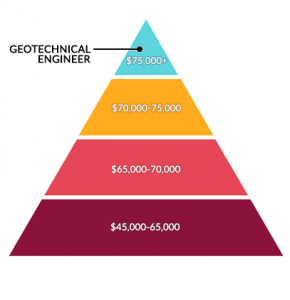Geotheta for Beginners
Geotheta for Beginners
Blog Article
The Facts About Geotheta Uncovered
Table of ContentsThe Geotheta DiariesThe smart Trick of Geotheta That Nobody is Talking AboutThe Ultimate Guide To GeothetaNot known Incorrect Statements About Geotheta
They team up with civil designers, architectural engineers, architects, and other experts to integrate geotechnical considerations right into the overall task layout and building procedure. This requires effective synergy, control, and communication to guarantee that the geotechnical facets align with the project purposes and meet regulative needs.Mining & Materials Design: Concepts of exploration, penetration prices, and aspects influencing the choice of boring method. Characteristics of nitroglycerins, firing systems and blast patterns. Blowing up techniques in surface area and below ground functions. Special blasting methods at excavation boundaries. Resonance and sound control. Mechanical and constant methods to fragmentation, including longwall shearing and fullface boring.
Modelling of piece and particle size distributions; comminution as a transfer function. Comminution modern technology: crushing, grinding, dimension category. Integrated evaluation of fragmentation and comminution procedures. Provided by: Mining & Products Design.
Excitement About Geotheta
Bachelor's level programs in civil, geotechnical, geological, and ecological engineering generally last 4 years and include general education and learning programs in English, social science, and the humanities, along with programs in innovative mathematics, architectural geology, and liquid mineralogy. (https://soundcloud.com/geotheta)
Geotechnical design includes the analysis of the soil and rock conditions at a specific website, and their implications for the growth of that site. As most structures rely upon the ground for assistance, it is without surprise that a detailed understanding of the ground conditions, and the suitability of foundation systems, are vital to the long-lasting stability and efficiency of the structure or structure.
Specialising in the examination of geological developments and ground behaviour, geotechnical engineers execute scientific investigations and testing to comprehend the influence these geological formations might have on the layout and building of building, civil and facilities projects. This proficiency is essential for the style and construction of buildings, roads, tunnels, dams, bridges, and supply of water and sewer system.
The geotechnical group at Douglas Partners routinely seek advice from architects, layout designers, developers, and home builders to make suggestions on layout and advancement propositions to ensure that the developed structures are appropriately created for the ground conditions. As an example, the layout of footing systems needs to think about the weight of the structure, the capacity of the ground to sustain that weight along with motion resistances and efficient building and construction.
The 5-Second Trick For Geotheta
This task is substantially simplified by the use our Douglas Map geospatial system that makes this details readily obtainable in a very easy to utilize internet internet browser interface. A geotechnical designer will direct the exploration of boreholes and examination pits to gather soil and other samples, and likewise assess surface area attributes and ground direct exposures to form a geotechnical design of the subsurface conditions.
Depending upon the job kind and ground conditions encountered, lab screening may to name a few things assess toughness, compressibility, sensitivity and/or leaks in the structure of soil and rock examples. Hereafter data is accumulated and collated, the outcomes are made use of for a geotechnical design of the site, which is typically provided as areas across the site.

A geotechnical examination by nature can only assess the ground conditions at the areas drilled or dug deep into. All-natural variations in soil and rock conditions can take place throughout a site and in between examination locations. It is for that reason good practice that the geotechnical engineer be kept throughout building and construction of the job to give on-site confirmation that the ground problems run into are consistent with the expectations and suggestions supplied in the geotechnical investigation report.
Geotheta Can Be Fun For Anyone
Geotechnical engineers utilize their thorough expertise of dirt and rock to evaluate danger and resolve problems on diverse facilities projectsGeotechnical engineering is a specialist branch of civil engineering which checks out the behaviour of earth products and the application of soil and rock auto mechanics. Engineer of Record. As a geotechnical engineer, you will examine the physical, mechanical and chemical properties of soil and rock in order to create foundations, maintaining frameworks and earthworks
Geotechnical design is closely connected to and overlaps with, both design geology and ground design - https://allmyfaves.com/geotheta?tab=Geotheta. It's feasible to be experts in geotechnics or job for Get More Info a geotechnical business however be understood as a design rock hound or a ground engineer. As a geotechnical engineer, you'll need to: construct and keep relationships with clients and other specialists involved in the site, throughout each projectmaintain safety standards on website be conscious of price effects when you make recommendationsstudy geological maps and aerial photos from a variety of resources and from various time periodsexamine construction plans to see exactly how practical they are based on your understanding of the siteinvestigate threats or geological dangers for the sitesearch for ecologically sensitive attributes, such as land fill beginning to create valid and interpretive ground modelsplan field investigationsdrill and evaluate examples of bedrock, dirt, groundwater and additional products manage various other experts on sitesolve technical issues as they emerge, such as unforeseen structures at drill sitesmonitor conditions throughout and after building and construction to ensure structures are secure in the brief and lengthy termadding information collected on site to your initial researchcreating geotechnical estimations, drawings, and 2 or three-dimensional computer system versions translating the datamaking referrals about the recommended use the website

Report this page